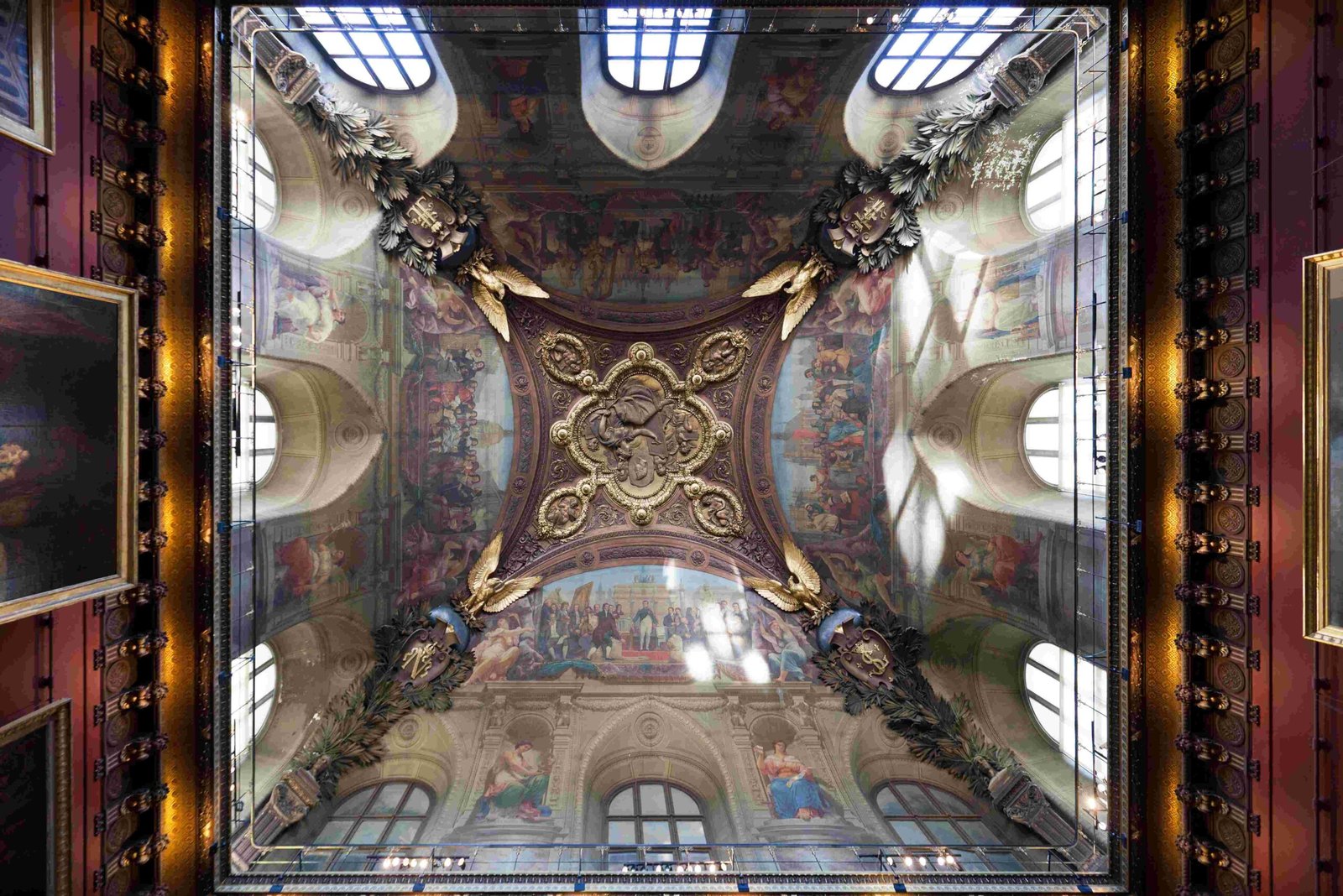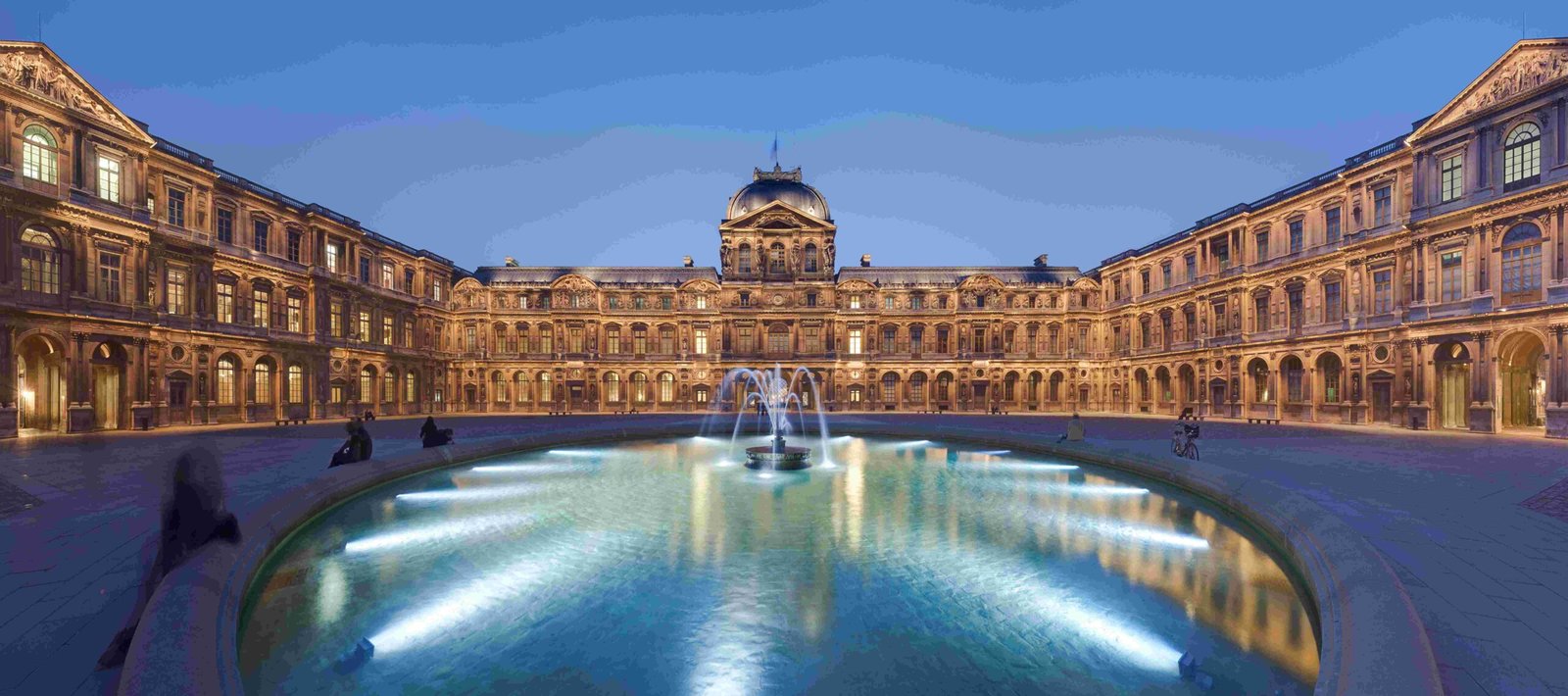The Louvre Museum aesthetic is a harmonious blend of classical architecture, artistic grandeur, and modern design elements. From its iconic glass pyramid entrance to the majestic Colonnade de Perrault, the Louvre embodies centuries of French architectural evolution. Its vast collection of art, spanning from ancient civilizations to the 19th century, is displayed in meticulously curated galleries that enhance the visual experience. The museum’s aesthetic is characterized by its grand scale, intricate details, and the seamless integration of historical and contemporary elements.
What Are the Defining Characteristics of the Louvre’s Architectural Style?

The Louvre’s architectural style is primarily rooted in French Classicism, with notable elements including:
- The Colonnade de Perrault: A masterpiece of French Architectural Classicism
- Trabeated colonnades with coupled giant Corinthian columns
- Five-part pattern typical of French palaces
- Stone construction for a monumental appearance
- Flat roofline, innovative for its time in France
- Low-relief sculpture on end pavilions, reminiscent of Roman triumphal arches
The eastern façade, known as the Louvre Colonnade, exemplifies these characteristics. Its design follows strict principles laid down by the ancient Roman architect Vitruvius, creating a harmonious and imposing structure that has become an iconic symbol of French architecture.
How Does the Interior Design Complement the Louvre’s Aesthetic?

The interior design of the Louvre Museum is a crucial component of its overall aesthetic, carefully crafted to enhance the visitor experience and showcase its vast collection. Key aspects include:
- Consistent classical and neoclassical style throughout the galleries
- Chronological and thematic arrangement of artworks
- Grand halls and galleries designed to complement the art on display
- Careful integration of modern amenities without compromising historical integrity
The Denon Wing, home to European paintings including the Mona Lisa, is a prime example of how the interior design supports the museum’s aesthetic. Its spacious galleries and carefully considered layout allow visitors to appreciate the artworks in an environment that respects both the art and the building’s historical significance.
What Role Does Lighting Play in the Louvre’s Aesthetic?
Lighting is a critical element in the Louvre’s aesthetic, serving both functional and artistic purposes:
| Lighting Type | Purpose | Effect |
|---|---|---|
| Natural Light | Enhances viewing experience | Creates dynamic, changing atmosphere |
| Artificial Light | Ensures consistent illumination | Highlights artwork details |
| LED and Halogen Fixtures | Minimizes UV radiation and heat | Protects artworks from damage |
The museum employs a sophisticated lighting design that combines:
- Large windows and skylights for natural light
- Carefully placed artificial lighting to supplement natural light
- Specialized fixtures to highlight specific artworks
- Lighting systems that adapt to changing conditions throughout the day
This thoughtful approach to lighting not only enhances the visual appeal of the artworks but also contributes to the overall ambiance of the museum, creating an immersive and aesthetically pleasing environment for visitors.
How Can Visitors Best Experience the Louvre’s Aesthetic?
To fully appreciate the Louvre’s aesthetic, visitors can take advantage of several options:
- Guided Tours: Focused on architectural and aesthetic elements
- Accessibility Features:
- Wheelchair ramps
- Elevators
- Audio guides for visitors with disabilities
- Scheduled Events and Exhibitions:
- Temporary exhibitions on architectural history
- Lectures and workshops on design and aesthetics
- Self-Guided Exploration:
- Use of museum maps to navigate different wings and styles
- Taking time to observe the interplay between art and architecture
Visitors should plan their visit in advance, considering the vast size of the museum and the diverse range of artistic and architectural styles represented. It’s recommended to allocate sufficient time to explore different sections of the museum, allowing for a comprehensive experience of the Louvre’s aesthetic.
What Makes the Louvre’s Glass Pyramid a Unique Aesthetic Element?
The Glass Pyramid, designed by architect I.M. Pei and completed in 1989, is a striking modern addition to the Louvre’s classical aesthetic:
- Serves as the main entrance to the museum
- Constructed of glass and metal
- Height of 21.6 meters (71 ft)
- Surrounded by three smaller pyramids
The pyramid’s design:
1. Creates a stark contrast with the historical architecture
2. Allows natural light to flood the underground lobby
3. Offers a unique visual experience both day and night
4. Symbolizes the museum’s embrace of modernity while honoring its historical roots
This bold architectural statement has become an integral part of the Louvre’s aesthetic, demonstrating how contemporary design can complement and enhance historical structures.
How Does the Louvre’s Aesthetic Influence Its Collection Display?
The Louvre’s aesthetic philosophy extends to how it displays its vast collection:
- Thematic Arrangement:
- Artworks grouped by period, style, or cultural origin
-
Enhances understanding and appreciation of artistic evolution
-
Gallery Design:
- Each room tailored to complement the artworks it houses
-
Use of color, lighting, and spatial arrangement to create optimal viewing conditions
-
Integration of Technology:
- Interactive displays and digital information panels
-
Augments the visual experience without detracting from the art
-
Preservation of Historical Elements:
- Original architectural features incorporated into display areas
- Creates a dialogue between the art and its surroundings
This thoughtful approach to display ensures that the museum’s aesthetic enhances rather than overshadows the artworks, creating a harmonious environment that celebrates both art and architecture.
In conclusion, the Louvre Museum’s aesthetic is a complex interplay of historical architecture, modern design, and curatorial expertise. From its grand exterior to its meticulously designed galleries, every aspect of the museum contributes to a unique and awe-inspiring visual experience. As one of the world’s most renowned cultural institutions, the Louvre continues to evolve its aesthetic approach, ensuring that it remains a beacon of artistic and architectural excellence for generations to come.
References:
1. Louvre Colonnade – Wikipedia
2. The Colonnade of the Louvre, masterpiece of Louis XIV
3. Claude Perrault, East façade of the Louvre – Smarthistory

